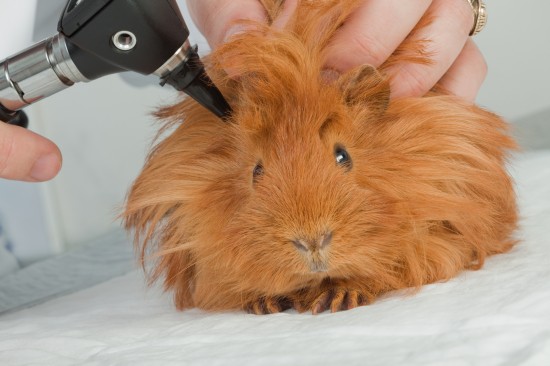
I see this really as a continuum of very severe cases which are referred into my veterinary dermatology practice and then quite mild cases that I think are possibly missed in general practice. So these are possibly the ones that you may be missing and we’ll talk a little bit more in detail about that. In my veterinary dermatologypractice,the first type of dog that might come in might be a chronic atopic dog. It’s had atopic dermatitis for most of its life. It’s limped along with it. It comes to the vet quite regularly. It may be a case that’s with the primary vet it’s not with me at this stage and they’ve been treating it with steroids or cyclosporine, all the various treatments that you can use and the dog has kind of limped along as they sometimes cannot be greatly controlled but kind of enough that the dog is under control when suddenly it worsens dramatically and then they try to increase the steroid dose that doesn’t help. The dog starts looking more and more scaly, erythematous, then nodules appear and this is often when you know a case will be referred to me. It’s a chronic atopic dog and we just don’t seem to be having any success with it. What should we do?
Another case might be an old dog that’s never really had skin problems before and then suddenly at the age of 10, 11, 12, it suddenly develops skin problems. This is very unlikely to be an atopic dog. We all know that atopy usually happens in the first three years of life. The vet puts these dogs onto steroids and they’re not really doing that well. And he’s trying various treatments. He might have tried to start antibiotics. Antibiotics really don’t work, although, sometimes I use them as an adjunct treatment. At that point, hopefully, the case is referred across to me and with our work-up we find that this dog has epitheliotropic lymphoma.
The third type ofdog is an interesting case because this actually is one of my own dogs that has fallen into this category. My own dog was a dog that really hadn’t had any skin problems and at five years old started to developed lip fold pyoderma as I thought and I tried to treat it with a bit of malaseband so on and antibiotics and really wasn’t happy with the way it was going. And so I actually cut the lip folds out as one does but there was a little angel or whatever who reminded me in the back of my mind that maybe I should send this off because I thought to myself “Well, it’s my own dog. I’m sure if I ask LucyOldroyd nicely at Abbey Vet Services she may not charge me for it.” So I sent it off and sure enough very surprisingly to me it came back as epitheliotropic lymphoma. I, of course, got quite upset by this because most dogs that I’d seen with epitheliotropic lymphoma did not live for very long. I think Lucy was moving around in her chair then when she realized she gave me a free biopsy but it was well worthwhile Lucy. We knew we would need to use it at some stage in the future in our veterinary dermatology practice. So I thought that Change really didn’t have a lot of time left to live but we’d caught it very early but that things were going to develop quite quickly. And nine years down the line Chance is still alive so obviously there are other diseases out there but this is a continuum, this is a low grade disease and again VerenaAffolter and Peter Moore talked about this and they called this a cutaneous lymphocytosis. I’m sure Lucy will perhaps have something to say with the whole argument of when does a reactive disease become a neoplastic disease and vice versa so we’ll look forward to hearing Lucy’s thoughts about that.
And this was as I say the study again at Hong Kong at 2008. Cutaneous lymphocytosis is seen in dogs and cats. Like the human diseases, very slowly progressive and we actually in the human medicine we call it indolent lymphoma. Prednisolone as I used in Chance is used to treat and worked very well. And the lesions can stay stable for long periods. I mean they said up to six years and Chance is now nine years on from that condition. In fact, he’s survived so long we couldn’t find his sample to show you a slide of it. But then it may just suddenly progress into a high grade lymphoma so that is also possible.
One of the clinical signs that you’re going to see when you are presented with a case of epitheliotropic lymphoma you’ll quite common see erythema and scaling. You’ll also see mucocutaneous erythema but also look out for depigmentation and look out for ulcerations. You’ll also begin to see the development of cutaneous plaques and nodules. I just think the majority of these cases that you will see will be mycosis fungoides and they are slow to develop systemically but they can generalize and they will go into the lymph nodes and then rarely into the liver and into the spleen.
 The Alopekis - A Charming Ancient Greek Dog
The Alopekis - A
The Alopekis - A Charming Ancient Greek Dog
The Alopekis - A
 When Does A Kittens Eyes Change Colour?
When Does A Kitte
When Does A Kittens Eyes Change Colour?
When Does A Kitte
 How To Deal With Ear Infections In Guinea Pigs
How To Deal With
How To Deal With Ear Infections In Guinea Pigs
How To Deal With
 Goat fence which has a range associated with flexibility and eyes
Goat fence which has a range associated with flexibility a
Goat fence which has a range associated with flexibility and eyes
Goat fence which has a range associated with flexibility a
 Symptom Checker - Panting And Shaking In The Dog
Symptom Checker -
Symptom Checker - Panting And Shaking In The Dog
Symptom Checker -
Copyright © 2005-2016 Pet Information All Rights Reserved
Contact us: www162date@outlook.com